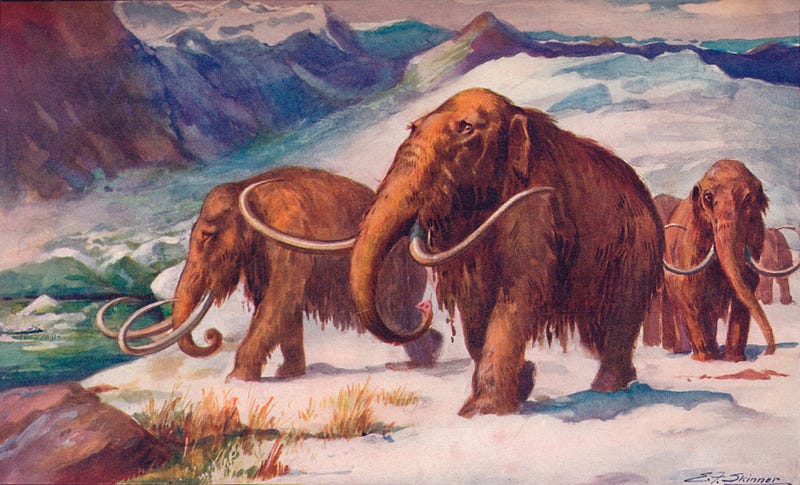How Eating a 35,000-Year-Old Frozen Woolly Mammoth Would Taste
Written on
Exploring the Fascination with Mammoth Meat
In the frigid Arctic regions, the remains of woolly mammoths can be so well-preserved that they still contain blood in their veins. Their flesh retains a pink hue, prompting some to consider the idea of consuming it. The lore surrounding meals involving woolly mammoths, preserved since the Ice Age, ranges from the bizarre to the more mundane. Let's begin with some of the more fantastical accounts.
In 1901, a team investigating the Beresovca River in Siberia discovered a remarkably preserved male mammoth, which still had grass in its mouth. The mammoth’s bones and skin were later exhibited in St. Petersburg, and reports suggest that its flesh was served at a lavish “mammoth banquet.” According to one enthusiastic observer, the mammoth steak was quite palatable, with guests claiming it was not significantly tougher than modern-day sirloin.
A few decades later, the Explorers Club hosted an exotic dinner in New York City featuring meat purportedly sourced from a mammoth carcass found in the Aleutian Islands. Each guest received only small portions, but this did not deter them from bragging about their unique Ice Age dining experience. However, there was much debate afterward regarding whether the meat was actually from a mammoth, a mastodon, or an extinct giant sloth known as megatherium.
Despite the excitement, DNA analysis of the meat from the 1951 dinner revealed it was none of these ancient species. Instead, it matched that of the green sea turtle, a species still found today. As for the 1901 banquet, paleontologist I. P. Tolmachoff later declared that all newspaper claims regarding the St. Petersburg dinner were entirely fabricated. He also noted that woolly mammoth meat frozen for thousands of years is “absolutely unpalatable” and emits a “horrible putrid smell.” Clearly, it is not something one would want to serve or consume.
True Encounters with Frozen Mammoth Meat
When it comes to actual attempts at consuming frozen mammoth, historical accounts from the 18th and 19th centuries describe how the Evenki people of Siberia sometimes fed their dogs with mammoth meat. However, humans generally have shown far less interest in eating it. Over the millennia, the qualities that make meat enjoyable can degrade significantly.
One major issue is the fat content, which can transform into a substance called adipocere, or “corpse wax.” This happens even in cold environments where microbes that typically break down fat are thought to be less active. Shari Forbes, a forensics expert, suggests that fluctuations in temperature over tens of thousands of years could have allowed this substance to form in Siberia. Adipocere can have a texture similar to cottage cheese and emits a rancid odor—hardly appealing for consumption.
Additionally, the muscle tissue of these ancient animals undergoes changes akin to meat that has been frozen for extended periods. Ice crystals can rupture the muscle fibers, as noted by food chemist Matt Hartings. While the meat may initially appear solid and meat-like, once thawed, it transforms into an unappetizing goo.
In fact, historian Dmitry V. Arzyutov reported that Russian paleontologists he spoke with attempted to cook mammoth meat, only for it to devolve into a foul-smelling liquid. Nevertheless, some adventurers continue to seek out mammoth remains. In the documentary Genesis 2.0, one individual even chews on raw Ice Age meat on screen, highlighting a certain bravado that may motivate such actions, according to Arzyutov.
Chapter 2 Title
Section 2.1 Title
This section examines the myths and realities surrounding the consumption of woolly mammoth.
Subsection 2.1.1 Title

Section 2.2 Title
The ongoing fascination with ancient meat and its implications for modern cuisine.